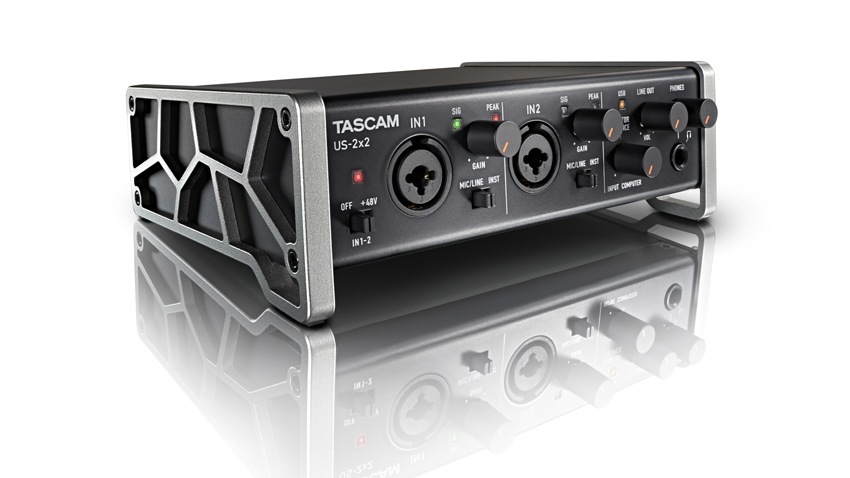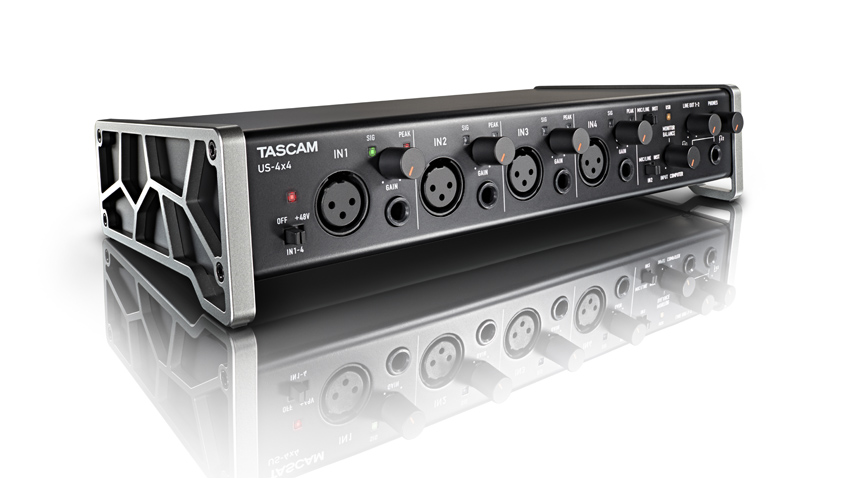Tascam unveils new 2x2 and 4x4 USB audio interfaces
US-2x2 and US-4x4 are desktop-friendly devices for PC, Mac and iOS

Tascam US-2x2

Tascam US-4x4
Tascam has added a couple of new audio interfaces to its line-up: the US-2x2 and the US-4x4. Looking rugged and utilitarian, these offer 2-in/2-out and 2-in/4-out IO options respectively.
The US-2x2 sports a couple of mic preamps that promise "the best noise and distortion specs in their class," while Tascam is also talking up the sound quality of the interface as a whole. The US-4x4 adds two more preamps, plus those two extra line outs.
The interfaces' aluminium cases were designed by The Box studio in Germany, apparently, and feature removable side panels. These angle the controls towards you, which should make for easier access.
Compatible with Mac, PC and, if you use a power supply, iOS devices, the US-2x2 and US-4x4 look set to cost around £120/$150 and £175/$250 respectively.
Tascam US-2x2 features
- Two high-quality Ultra-HDDA mic/line preamps with up to 57dB of gain
- Two-in/two-out USB 2.0 interface with up to 96kHz/24-bit resolution
- XLR/1/4" combination input jacks
- Zero-latency Direct Monitoring
- High-quality audio components like NE5532 op amps for 125dBu EIN and 105dB S/N ratio
- USB Audio Compliant 2.0 drivers for iOS compatibility
- Independent line out and headphone level controls
- MIDI Input and Output
- Aluminium body with angled design for better desktop visibility
- Optional power supply
- Includes SONAR X3 LE and Ableton Live Lite 9
US-4x4 differences
- Four high-quality Ultra-HDDA mic/line preamps with up to 57dB of gain
- Four-in/four-out interface with up to 96kHz/24-bit resolution
- Power Supply included (required for use)
Get the MusicRadar Newsletter
Want all the hottest music and gear news, reviews, deals, features and more, direct to your inbox? Sign up here.



I’m the Deputy Editor of MusicRadar, having worked on the site since its launch in 2007. I previously spent eight years working on our sister magazine, Computer Music. I’ve been playing the piano, gigging in bands and failing to finish tracks at home for more than 30 years, 24 of which I’ve also spent writing about music and the ever-changing technology used to make it.









